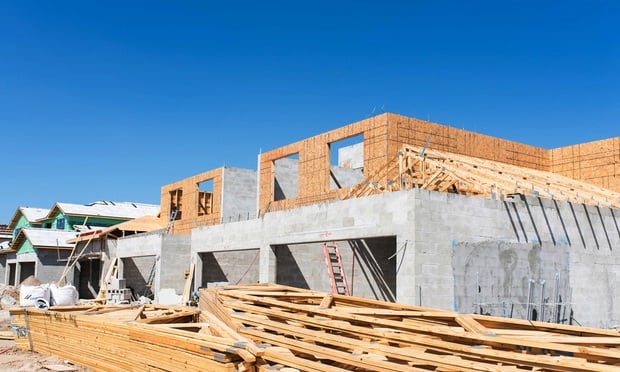IRVINE, CA—Now that e-commerce is re-creating the retail and industrial playing fields, he who has the fastest delivery method wins, JLL's senior managing director Louis Tomaselli tells GlobeSt.com. At a recent industrial business-line event, Tomaselli and senior managing director Bart Reinhard identified 10 compelling industrial facts and trends in the US, and Tomaselli says e-commerce is the most significant one in the country.
“All the retailers are moving toward a desire from clients for same-day delivery or 'How quickly can I get the product I just ordered?'” says Tomaselli. “This is driving almost half of all industrial development today. Walmart, P&G and Nordstrom are all trying to see how they can differentiate through delivery, playing to the desire for immediate gratification.”
This is the year of the distribution center, and it's changing how logistics works across the world, Tomaselli adds. “The most important job within a real estate portfolio is not about the space you occupy or how to use it. You need to look at the metrics behind where your suppliers are and where your buyers are. Maybe you should be in Phoenix or another market.”
In Orange County, the e-commerce trend is being played out on a smaller scale than in big-box markets like the Inland Empire. “Facilities will likely be in the 100,000- to 200,000-square-foot range, which is the sweet spot in Orange County for industrial,” says Tomaselli. “The e-commerce fulfillment companies have been looking to Orange County to do that delivery, but it won't be the same as in the Inland Empire because it won't be so focused on the state-of-the-art, 36-ft. clear height, high-end picking machines and computerization. There are smaller fulfillment centers where they'll be getting product to the larger centers to deliver.”
The e-commerce firms JLL represents have been telling the company that the next big step in industrial development once the big-box centers are in place will be smaller feeder centers, which will be ideal for Orange County. But for the time being, Tomaselli says, industrial rent growth is healthy, vacancy rates are at a historical cycle low and tenants are not taking space they can't fill only to dump it back on the market like they did in 2001 with the tech companies.
As for the “Industrial 10” compelling industrial facts the firm presented, they are as follows:
- Boeing brings in 1 billion parts, from 7,500 suppliers, through 500,000 people in 73 countries to build 700 planes per year.
- In Fremont, CA, Tesla starts building a Model S, completely in-house, beginning with a 10-ton steel coil, and through the use of smart carts and 160 robots, employs only 3,000 people to build 1,000 cars per week.
- At the end of 2013, the number of mobile-phone devices out-numbered the 7 billion people on earth. Nearly 40% of US mobile-phone owners will become mobile-phone shoppers by 2017, totaling more than 125 million.
- Q4 2013 payrolls increased by 1.6% and more than 12 million jobs added nationwide, the highest recorded since 2009. More than two-thirds of states added factory jobs, including California with 8,000 new jobs, an 8% increase.
- While the US is not the cheapest place for high-tech manufacturing, it is regarded as the most capable. With merely 5% of the world's population, the US employs one-third of its high-tech researchers, accounting for 40% of high-tech R&D.
- Last year, industrial nationwide marked a five-year net absorption high with forecasts it could top 180 million square feet in 2014. JLL anticipates beating a cycle low of 7.5% in 2014, and 41 of 48 markets are tracking record-rising absorption. Also, total US rent growth could exceed 3.5% in 2014, with Southern California likely to experience gains as high as 5% or more.
- The top 10 of the 25 US ports accounted for 85% of total US full-container TEU volume. Los Angeles, Long Beach and New York continue to lead US port shares with a combined total of almost 50% of volume. One of the top three growth ports was Long Beach (17%), and L.A. and Long Beach combined continue to lead the top volume spot in the US at 36%.
- As online demand drives growth and global online sales a mere 4% of retailers' sales, the e-tailing revolution has only just begun. The ability to deliver quicker will become the key competitive advantage, and e-commerce omni-channel retailing now accounts for 40% of “big-box” construction across the country. US retail sales were $4.4 trillion in 2012, where e-commerce comprised 5.5% and is predicted to double in the next four years.
- For the 10-year period from 2003 to 2013, there were 12 1-million-square-foot-plus buildings built in Southern California. There are 21 buildings under construction or planned in Southern California as of February 2014—almost double.
- In a recent Industrial Asset Management Council survey, more than 80% of respondents said their industrial facilities were on average 11 years or older, and 84% indicated that flexibility and re-use potential were major concerns. In Orange County, half of our 260-million-square-foot base was built between 1970 and 1989. That equates to more than 60% of the 9,000 buildings being at least 25 years old.
© 2025 ALM Global, LLC, All Rights Reserved. Request academic re-use from www.copyright.com. All other uses, submit a request to [email protected]. For more information visit Asset & Logo Licensing.







